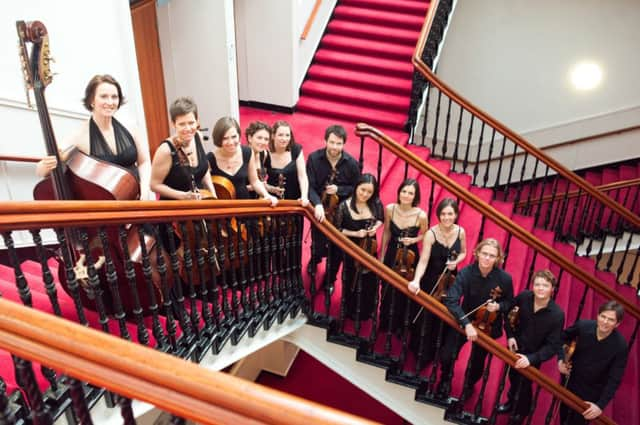Classical review: Scottish Ensemble


Scottish Ensemble & Alasdair Beatson
Queen’s Hall, Edinburgh
***
In what way was the semi-darkness in which this audience sat in gloomy anticipation meant to prepare us for the sudden sunburst of Mozart’s bright and cheery Divertimento in D?
The hall’s lugubrious colour scheme is miserable enough, but it’s something that needs to be countered by imaginative lighting or dressing up, not added to by casting a shadow of impending doom over the audience.
Advertisement
Hide AdAt least there was a glistening collection of music to cheer us, opening and closing with two heart-warming examples of Mozart: the youthful and virile Divertimento, which this string ensemble addressed with forthright charm and effervescence; and the mature, but no less flamboyant, Piano Concerto No 12 in A, K414, presented in a valid version for piano and strings, with Scots pianist Alasdair Beatson as soloist.
Beatson’s presence throughout the programme was mostly invigorating and enlightening.
He joined SE front man Jonathan Morton as fellow protagonist in Haydn’s little known Concerto for Violin and Piano No 6, a work that reflects more the spirit of the bygone Baroque than full-blown Classicism.
As such, the large grand piano had a weighty presence in the ensemble, preventing the music from truly taking off in the tuttis. But in tandem with Morton, and where lyrical flourishes took over, Beatson’s filigree passagework and ornamentation were charismatic and stylish.
His Mozart concerto was judicious and thoughtful, energetically supported by the strings and, besides one or two slips in concentration, boasted a central slow movement whose collective poeticism was whimsically offset by the sprightly outer movements.
Within the central Mozartian theme, Morton’s programme was punctuated by quirky tributes to the Classical period by the very distinctive voices of Arvo Pärt and Alfred Schnittke.
Advertisement
Hide AdPärt’s Mozart – Adagio for Violin, Cello and Piano, shrouds an original Mozart piano adagio within a ghostly halo of string writing typical of the Estonian composer’s trademark tintinnabuli style, sounding at times like a magical music box, and performed with beautifully defined sensitivity by Morton, Beatson and cellist Alison Lawrance.
In his mischievous Moz-Art à la Haydn, Schnittke weaves infinite Mozart references into a musical and theatrical parody – the musicians scuttling around like characters from a comic crowd scene – which produced, in this animated performance, laughs aplenty.
Advertisement
Hide AdIt was only the Queen’s Hall itself that needed cheering up.
Seen on 28.10.14
SCOTSMAN TABLET AND IPHONE APPS